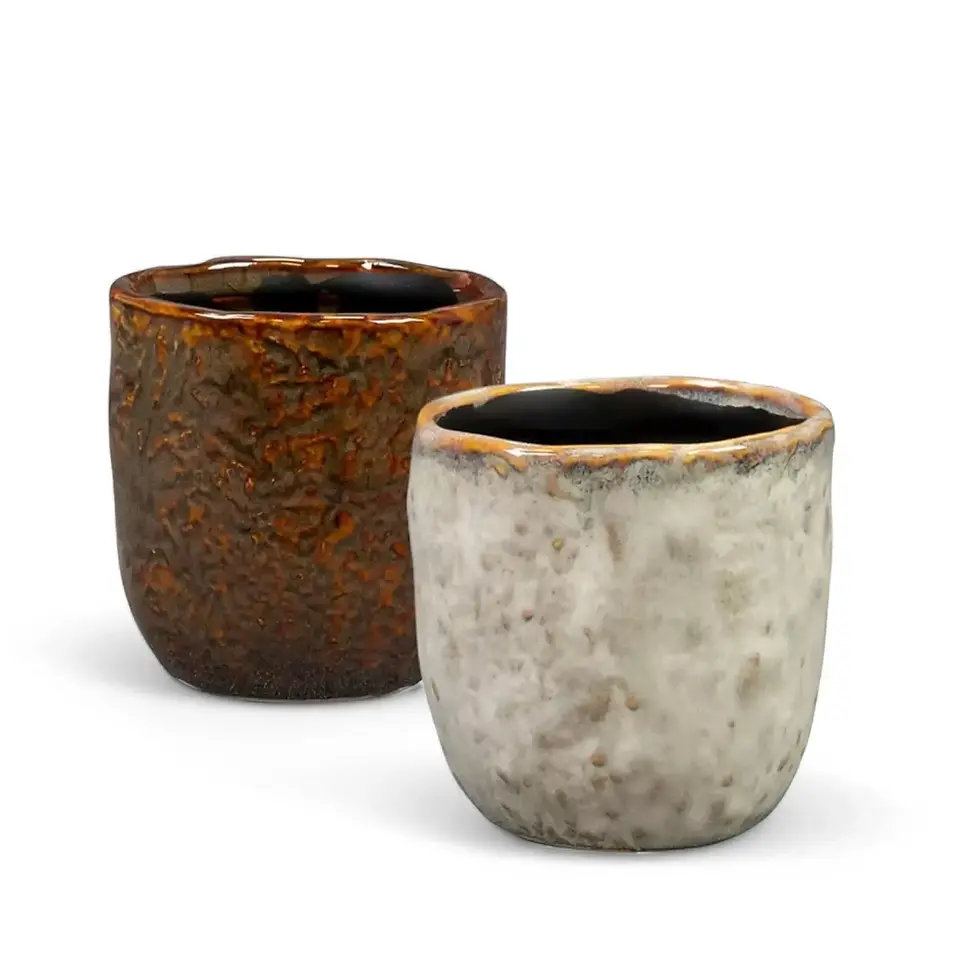Goeppertia (Calathea) veitchiana 'Medaillon' - Detailed Care and Growing Guide
Goeppertia veitchiana 'Medaillon', commonly still referred to as Calathea 'Medallion', is a striking houseplant that captivates with its ornate, large, round leaves. The upper side of its foliage boasts a beautiful blend of deep green with light green brushstroke-like patterns, while the undersides reveal a rich burgundy tone, adding contrast and elegance.
Unique Features and Advantages of Goeppertia (Calathea) veitchiana 'Medaillon'
- Striking Foliage: Bold, medallion-shaped leaves with an intricate mix of greens and a deep purple underside.
- Ideal Indoor Size: Grows 60-90 cm tall and wide, making it suitable for homes and offices.
- Pet-Friendly Choice: Non-toxic to cats, dogs, and humans.
- Moderate Growth Rate: Produces new foliage consistently with proper care.
Natural Habitat and Growth Behavior of Goeppertia (Calathea) veitchiana 'Medaillon'
- Origin: Native to the humid tropical rainforests of Ecuador.
- Climate: Prefers temperatures between 20-30°C with high humidity above 70%.
- Growth Habit: Compact, upright, and bushy shape.
- Toxicity: Safe for pets and humans.
Care Guide for Goeppertia (Calathea) veitchiana 'Medaillon'
- Placement and Light: Bright, indirect light; avoid direct sunlight to prevent leaf scorch.
- Watering: Keep soil consistently moist but not soggy; use filtered, distilled, or rainwater.
- Humidity and Temperature: Prefers 50-70% humidity and temperatures between 18-27°C.
- Soil and Potting Mix: Well-draining, peat-free mix with perlite and orchid bark.
- Repotting: Repot every 2 years or when roots outgrow the pot.
- Fertilization: Feed monthly in spring and summer with a diluted balanced fertilizer.
- Propagation: Best propagated through division during repotting.
- Pruning: Trim yellow or damaged leaves at the base.
Common Problems and Solutions for Goeppertia (Calathea) veitchiana 'Medaillon'
- Pests: Treat spider mites, fungus gnats, mealybugs, and thrips with neem oil or insecticidal soap.
- Root Rot: Caused by overwatering; repot in fresh soil if detected.
- Leaf Problems: Curling leaves indicate low humidity or underwatering; brown edges suggest dry air or fluoride in water.
- Fungal Issues: Prevent leaf spot by avoiding overhead watering and ensuring good air circulation.
Interesting Facts About Goeppertia (Calathea) veitchiana 'Medaillon'
- Exhibits nyctinasty, with leaves that move up at night and open in the morning.
- Originally classified as Calathea veitchiana but reclassified under Goeppertia in 2012.
Etymology and Botanical History of Goeppertia (Calathea) veitchiana 'Medaillon'
- Genus: Named after Heinrich Göppert, a 19th-century German botanist.
- Species: Named veitchiana after the Veitch family, influential horticulturists.
- First Described By: Veitch ex Hook.f. and reclassified by Borchs. and S. Suárez in 2012.
FAQs About Goeppertia (Calathea) veitchiana 'Medaillon'
- Why are the leaves curling? Likely due to low humidity or underwatering. Increase watering and humidity.
- Is it safe for pets? Yes, non-toxic to cats, dogs, and humans.
- How often should I repot it? Every 2 years or when it outgrows its pot.
Enhance your indoor space with the lush beauty of Goeppertia (Calathea) veitchiana 'Medaillon'. Order yours today!
Rhipsalis baccifera
Rhipsalis baccifera comes in following sizes:
Baby Plant – is approximately 12 cm long/ tall and comes in a ⌀ 6 cm pot
S – is approximately 15 cm long/ tall and comes in a ⌀ 10.5 cm pot
L – is approximately 30 cm long/ tall and comes in a ⌀ 17 cm pot

























































